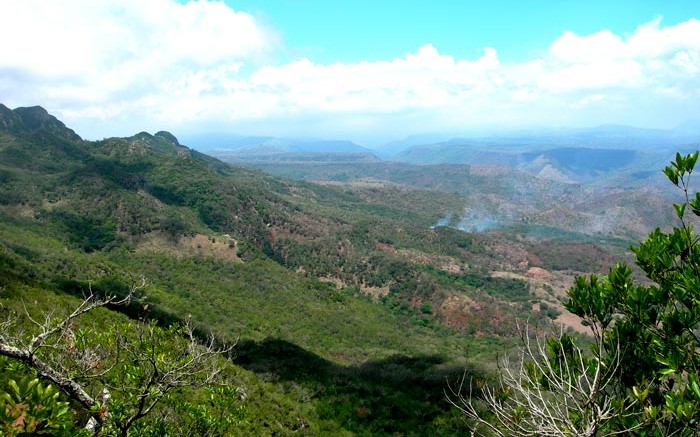Timmins Gold (TSX: TMM; NYSE-MKT: TGD) has been looking at Goldgroup Mining’s (TSX: GGA) Caballo Blanco project in Mexico for a couple of years now, and has finally signed a deal to acquire 100% of the asset.
“It takes time — all the conditions have to fall into place for a deal to get done,” Bruce Bragagnolo, CEO at Timmins Gold, says in an interview. “We thought it was a good project and so did they. I think they parted with it reluctantly.”
But like many cash-strapped juniors, Goldgroup can make good use of the US$10 million in cash and 16.1 million shares of Timmins Gold — valued at US$15 million — in exchange for Caballo. Timmins Gold will also have to pay Goldgroup another US$5 million if and when it obtains a mining permit for Caballo, or the company undergoes a change of control. The additional payment can be in cash or shares.
Bragagnolo says his team had looked at many projects but “the technical aspects of this one really stood out, and we liked the exploration upside both around the pit — it’s under-drilled right now — and we think there’s a lot of exploraton upside in the district.”
“It fits in with our profile,” he continues, “and it’s a deposit that has good economics, and we’re picking it up at an attractive valuation.”
Bragagnolo, the co-founder of Timmins Gold, expects more drilling will expand and upgraded the resource. The open-pit, heap-leach project currently has indicated resources of 28.9 million tonnes averaging 0.62 gram gold per tonne for 575,000 contained oz. gold, and inferred resources of 24 million tonnes grading 0.54 gram gold for 419,000 contained oz. gold, based on 145 drill holes.
A 2012 preliminary economic assessment envisioned the Caballo project annually producing 90,000 oz. gold over a seven-and-a-half-year mine life. Capex has been estimated at US$85 million.
“The rates of return are very good,” Bragagnolo adds. “At US$1,200 per oz. gold it’s got a 37.5% pre-tax internal rate of return, which is double what a lot of companies are looking for, and at US$1,350 per oz. — which is not that much higher than where we are now — it’s 52.6%.”
Caballo, 65 km northwest of Veracruz, is made up of two large areas of epithermal gold mineralization called the Northern zone and the Highway zone. The two zones are contained within 13 mineral concessions spanning more than 540 sq. km. There is power and water available on-site.
Bragagnolo says the company gained expertise from building its San Francisco mine in Sonoro state, an open-pit heap-leach operation that it put into production in 2010 — just three years after the company’s initial public offering — and it produced 120,000 oz. gold in 2013. This year the company expects San Francisco will produce the same amount at a US$800 per oz. cash cost.
Bragagnolo says Caballo is exactly the type of operation that Timmins Gold is familiar with, and that “we have a fantastic team in Mexico — our president [Arturo Bonillas] is a Mexican, and we’ve got 500 people on the ground there.”
And while the Governor of Veracruz has said in the past that he’s not in favour of the project, suggesting there might be permitting risk, Bragagnolo believes that with Timmins Gold’s track record in the country and its large Mexican workforce, he doesn’t foresee any problems. “With the proper focused Mexican team that we have at San Francisco and the success we’ve had at San Francisco, we can do the proper studies and convince everyone it’s a good project.”
The next step is to revise the baseline environmental studies and some of the land-use studies, and redo the project’s environmental impact assessment — but Bragagnolo says the company is under no time or financial pressure to do anything at a faster pace. “We don’t have any real requirements here. We don’t have any forced capital requirements, which is a real advantage,” he explains. “After the initial payment, we don’t have to spend any money on this, and in this gold price environment, having that flexibility is important.”
He adds that while Caballo’s initial capital expenditure was estimated at US$85 million, the amount could be lower, given that the company put San Francisco into production for between US$40 million and US$50 million, which included an expansion. The 1.66-to-1 strip ratio at Caballo is also a bit better than at San Francisco and the ore type is softer, so it would require less crushing. “We feel that with some more work we can reduce the initial capex,” he says, “and we’ll have economies of scale for purchasing, distribution, manpower, etc.”
As for Mexico’s switch last year from a straight corporate tax rate to a new 7.5% tax on earnings before interest, taxes, depreciation and amortization and a 0.5% royalty, Bragagnolo says it’s unlikely there will be any further changes coming down the pike, unlike some other jurisdictions where mining companies face more uncertainty.
“I don’t think the recent tax has reaped the benefits the Mexican government thought it would, but it’s out there now … I think we’ve seen all the surprises we’re going to see on taxation for mining.”
At the end of September, Timmins Gold held $50.2 million in cash and equivalents — more than enough to fund the acquisition.


Be the first to comment on "Timmins Gold picks up Caballo Blanco from Goldgroup"